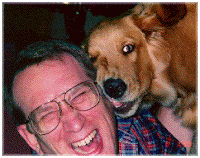updated 6 February 2017
 |
| <PREVIOUS PAGE ~ index ~ NEXT PAGE> |
The next four cards appear to be part of a series:
 |
Schumacher & Ettlinger, lith., 32 Bleeker St., NYC, was purchased along with several other lithographic publishers and merged to become the American Lithographic Company in December, 1895 |
 |
| Want to see what this became? visit nycurbed |
 |
| As can be seen above, the merged company had an even grander facade |
So what's the big deal?
Why did all these companies make so much money selling trade cards, reproductions of masterworks, etc.?
The answer is color. Before the mid-nineteenth century, most printed material was black and white. I suspect that Emma Jane Arnold began collecting cards to keep Earl and her other children occupied partly because she new they would marvel at the colors. As you have probably noticed, the cards are carefully arranged on each page, such as the one above, to focus attention and hold interest. The whole collection seems to shout, "Look at this color! Isn't it amazing?!" Visionary art in scrapbooking is similar to composition in photography. People had never seen anything like it before. And they--especially kids--loved it.
For further information, the Wikipedia page on Lithography explains some of the process by which the cards in the Earl J. Arnold Advertising Card Collection were made, as does the page on Lithography in the Nineteenth Century put up by the Metropolitan Museum of Art.
To give you a better idea of the state of the printing art in 1884, a portion of the Metropostcard printing invention timeline is presented below:
 |
| very colorful, but the markings are not familiar to me |
The author of this blog has attempted to correctly apply terms and conditions to Content. These pages and associated images are being made available exclusively for use in non-commercial and non-profit study, scholarship, research, or teaching . Researchers are responsible for using these materials in accordance with Title 17 of the United States Code and any other applicable statutes. All trademarks, service marks, trade names, trade dress, product names and logos appearing on this blog are the property of their respective owners.. In the event that any Content infringes your rights or Content is not properly identified or acknowledged please email me. Thanks!
This site includes historical materials that may contain negative stereotypes or language reflecting the culture or language of a particular period or place. These items are presented as part of the historical record, and do not represent or in any way reflect the personal views of the author of this blog, his ancestors, or his family.

You'll "catch my ear"
--if you comment here--











Comments